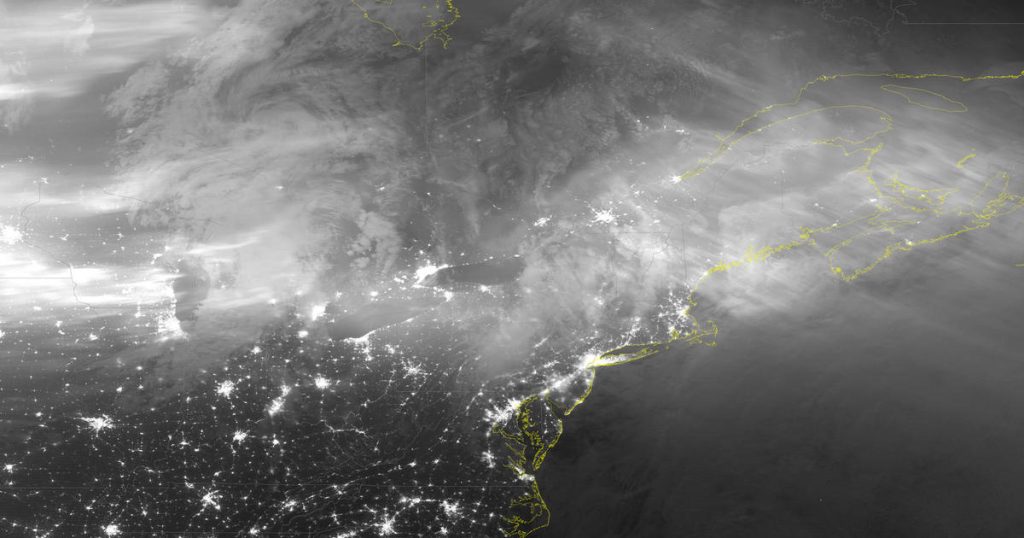A recent geomagnetic storm caused by solar flares disrupted farming equipment and planting operations in the Midwest and other parts of the United States. The storm, considered the strongest since 2003, impacted power grids, GPS, and communication satellites. Cameras on satellites captured images of the storm from space, showcasing the sun’s electromagnetic radiation. The Joint Polar Satellite System, operated by the University of Wisconsin-Madison’s CIMSS, provided valuable data on the storm and its effects on Earth.
The National Oceanic & Atmospheric Administration (NOAA) relies on its fleet of JPSS satellites for weather forecasting in the U.S. The satellites orbit the Earth multiple times daily, providing essential information for monitoring weather patterns. The recent storm disrupted navigational systems in farming equipment, posing challenges for farmers during the peak of the planting season. Minnesota farmer Patrick O’Connor shared his experience dealing with the impacts of the storm on his operations, highlighting the unforeseen challenges posed by solar winds traveling at high speeds.
Solar winds emitted by the sun can travel at speeds ranging from 250 to 500 miles per second, taking up to 90 hours to reach Earth from its 91 million-mile distance. The unpredictable nature of solar energy transport makes forecasting aurora borealis events as challenging as meteorological predictions from the 1950s. NASA officials attribute the stunning aurora displays to collisions between electrically charged particles in solar winds and the Earth’s atmosphere. Despite the disruptions caused by the recent geomagnetic storm, experts expect the JPSS satellites to continue providing valuable data for weather forecasting through the 2030s.
The occurrence of geomagnetic storms poses risks to various technological systems on Earth, including power grids, communication satellites, and navigational equipment. Farmers, in particular, are vulnerable to disruptions during critical planting seasons, as seen in the recent storm affecting operations in the Midwest. The reliance on satellite data for monitoring and predicting weather patterns underscores the importance of maintaining and improving technology to mitigate the impacts of solar flares on Earth. The images captured by the JPSS fleet offer valuable insights into the dynamics of geomagnetic storms and their effects on the planet.
The continuous monitoring of solar activity and its impacts on Earth’s technology is essential for preparedness and mitigation strategies. The recent geomagnetic storm serves as a reminder of the challenges posed by solar flares and the need for robust systems to withstand their effects. As technology advances, it is crucial to enhance forecasting capabilities to predict and manage the impacts of such events on critical infrastructure. By leveraging satellite data and real-time monitoring, scientists and policymakers can better understand and respond to the dynamic interactions between the sun and Earth, ensuring the resilience of essential systems in the face of solar disturbances.
Overall, the recent geomagnetic storm highlighted the vulnerabilities of technology to solar activity and the disruptions it can cause to various sectors, including agriculture. Farmers and other stakeholders must be prepared to address the challenges posed by such events and adapt their operations to mitigate their impacts. By leveraging satellite data and advanced forecasting techniques, researchers can improve their understanding of solar phenomena and develop strategies to enhance resilience in the face of future geomagnetic storms. The ongoing monitoring of solar activity and its effects on Earth’s technology is crucial for safeguarding critical infrastructure and ensuring the continuity of essential services.


